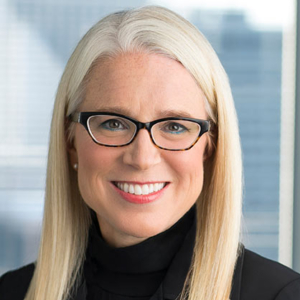Data analysis positions are currently playing a huge role in tech as corporations around the world seek to understand and utilize big data for their business.
 As we noted in 2012, 90 percent of Fortune 500 companies are investing in big data, expecting over $1 billion in revenue as this technology changes the way we use information.
As we noted in 2012, 90 percent of Fortune 500 companies are investing in big data, expecting over $1 billion in revenue as this technology changes the way we use information.
However, despite how these positions in the technology sphere are flourishing, the standard gender disparity of STEM fields remains intact. While women continue to earn degrees in technology and analytics, societal factors and discrimination within STEM industries keep them from getting and keeping these high-paying positions that are, by and large, taken up by men.
The Gender Disparity in Data Analysis
Gaining the education needed to fulfill these positions is the necessary first step to achieving equality in STEM fields. Although the number of women in data analysis and STEM fields remains lower than men, more women than ever are earning degrees in STEM, with 40 percent of statistics degrees currently being earned by women. Women also make up 40 percent of statistics department faculty that are set to move into tenured positions. There are a variety of campaigns that exist solely to push women and minorities towards these high-pay and in-demand jobs, and based on the number of degrees these groups are earning, it seems that their efforts are working.
Unfortunately, this isn’t necessarily resolving the problem.
Although women are earning these degrees at higher rates than ever, it’s often still difficult for them to remain in these fields due to the low number of women they often work with, especially in workplaces that particularly lack diversity. A lack of women in leadership roles and as fellow coworkers can often make women feel out of place and unwelcome, and with the casual discrimination that women often experience, they sometimes choose to move on to other roles.
Women can help combat these experiences by furthering their education in data analysis roles and gaining background knowledge on business and marketing touchpoints that make the application of their education even more valuable. Being able to calculate marketing acquisition cost and having the ability to dig through the conceptual data it entails can make women an even larger asset for businesses that are trying to incorporate these skills throughout their company.
The Value of Women in Data Analysis
One reason women are unable to live up to their potential in STEM fields is due to a narrative that is still used throughout media today, generalizing those working in STEM and tech as nerdy males. However, women are just as naturally suited for these positions as men. Although this narrative never had any factual basis behind it, times have changed. The value of women in STEM roles has become more apparent as women excel in roles throughout every related industry.
Still, social conditioning has an impact. When women are not introduced to computing and data analysis skills early on in their life and education, it can be difficult for them to develop the type of organic connection that they would form if they had more exposure to these subjects in early years. In order to close the gender gap that is so prevalent in STEM fields today, experts often espouse the belief that early exposure to STEM and computer-related skills could help make a huge difference to the number of women who pursue these fields.
Another reason that gender diversity is often unbalanced is due to the way companies recruit for various positions. Many recruiting efforts rely on referrals to determine top candidates. However, a study by the Federal Reserve Bank of New York found that 64 percent of employees recommend candidates of the same gender as themselves. In 2015, a study found that women are three times less likely to seek tech internships than men, which is another common way that companies recruit for STEM-related positions.
Strong, bold, and intelligent women are in the public eye now more than ever. Still, women tend to cause surprise and even strike uneasiness in some of their male coworkers because of how uncommon women tend to be in STEM industries. This type of environment causes women to turn away from tech and data analysis directions as options in school and for their future careers.
There are many factors that contribute to the lack of women in data analysis roles, and there is a lot of evidence to support theories that societal constructs hold women back from taking up space in these positions. Diversity is known to attract the best and freshest talent to growing businesses. Making an effort to reassess company recruiting efforts to draw more women and minorities to these positions can make companies stand out from the rest. Women have valuable perspectives to bring to the field of data analysis, and encouraging more women to pursue data analysis roles and STEM fields in general would advance them greatly.
Sam Bowman writes about marketing, tech, and how the two merge. He enjoys getting to utilize the internet for community without actually having to leave his house. In his spare time he likes running, reading, and combining the two in a run to his local bookstore.
Disclaimer: The opinions and views of guest contributors are not necessarily those of theglasshammer.com




 Lisa Hutter has been well served by the advice to take time to listen, but then also reflect, in order to figure out how you want to respond.
Lisa Hutter has been well served by the advice to take time to listen, but then also reflect, in order to figure out how you want to respond.



